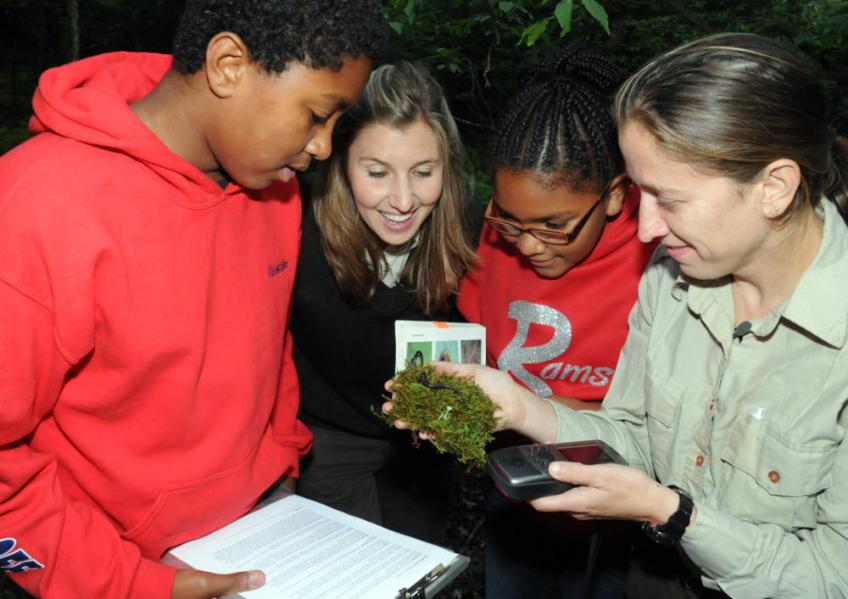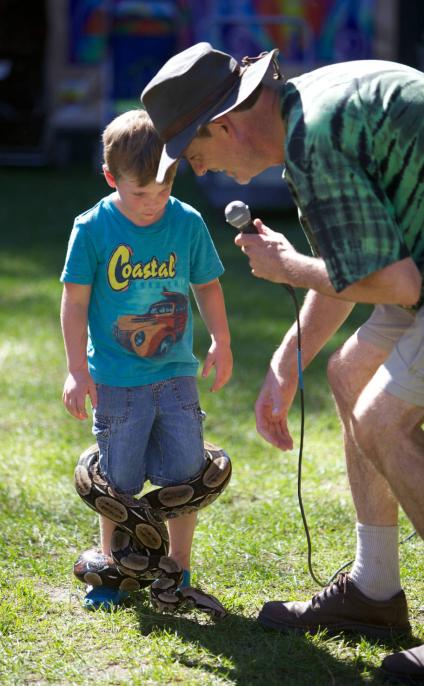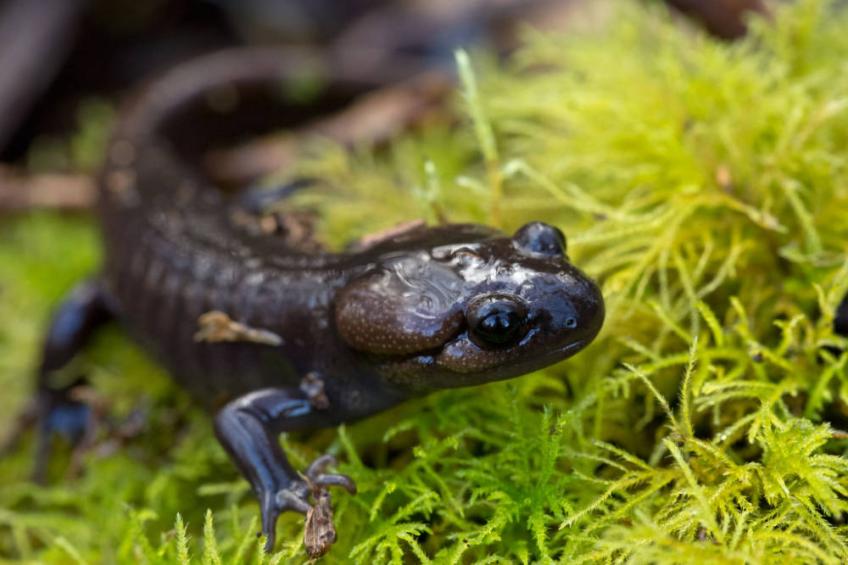Snakes and salamanders get no respect: Promoting conservation awareness of lesser-known species
OREGON—Clouded salamanders nest in trees. Western skinks spend much of their day sunbathing, whereas night snakes are mostly active when it’s dark out. Reptiles and amphibians are very diverse; but when it comes to conservation, they share one thing in common—all are relatively neglected by humans.
Maybe it’s because some people find reptiles so creepy. Or perhaps it’s because we know so little about the mysterious world of amphibians.
“Both of those factors are at play, and they interact,” said Dede Olson, research ecologist with the Pacific Northwest Research Station. “People have mixed feelings. In fact, with some reptiles like poisonous snakes, people might be antagonistic and view them as a threat.” Olsen aims to assuage such feelings with a better understanding of these ecologically crucial species.
As a rule, reptiles and amphibians have low “social capital,” according to Olson. And given limited time and resources, better known and liked creatures, such as bird and mammal species, often win more attention.
Olson has been studying reptiles and amphibians, their habitat preferences and potential population threats for more than 40 years. She and colleague David Pilliod, a U.S. Geological Survey research ecologist, coauthored “Elevating Human Dimensions of Amphibian and Reptile Conservation,” a report that discusses the inequities of conservation responses across species. In it, they note that despite being some of the most at-risk vertebrates, amphibians and reptiles are not generally a high-priority species for people.
Reptiles and amphibians serve indispensable roles in ecosystems
Amphibians are sensitive to changes in temperature and moisture. They are also tend to be vulnerable to chemical contaminants because their thin skin is porous for absorbing moisture and oxygen.
Emerging diseases are also a concern for amphibians and reptiles. Given their sensitivity to environmental changes and the central role they play in food webs, these species are often viewed as canaries in the proverbial coal mine of our ecosystems. In addition, their population losses could ultimately affect many other species and ecological processes—including humans.
Yet information about the life habits, abundance, and habitat requirements of reptiles and amphibians is not keeping pace with the level of threat many face. A Pacific Northwest example of this is the secretive sharp-tailed snake, which lives underground in burrows. Little is known about its conservation status, let alone exactly where it likes to live.
State agencies, which have authority over the species in their jurisdictions, traditionally focused on fish and game animals that people can hunt. Olson said that this has changed in recent years, with increasing protection for nongame species. However, given public attitudes toward reptiles and amphibians, they still often fail to inspire conservation action.
The human dimension is crucial
Olson and Pilliod’s report proposes a kind of community approach for raising awareness about amphibians and reptiles across various societal sectors—such as research, land management, regulatory and human communities—to create social capital for these species. Social networks and research and conservation task forces are examples, the scientists reported, that can help create a focal point for increasing social awareness and conservation efforts.
The answer, according to Olsen and Pilliod, lies in making connections: connecting people and groups to each other and to these fascinating creatures. To ensure these connections endure, they aim to gain a following with the next generation, especially by engaging children.
“Beyond the often complex science-[land] management interface, strides in the human dimension of amphibian and reptile conservation relies on all people, children-to-elders across communities, with specific efforts for human diversity and inclusion,” the authors’ report states.
That many species of amphibians and reptiles are already quickly losing ground underscores the need for communities to act quickly. According to Olson and Pilliod, we will never have as much biodiversity as we have today.



